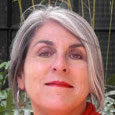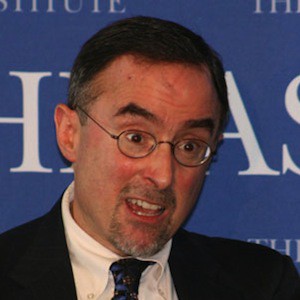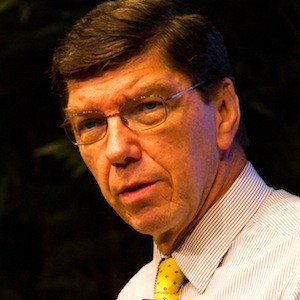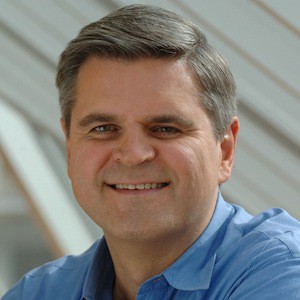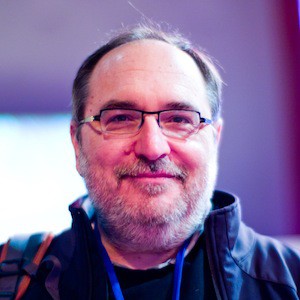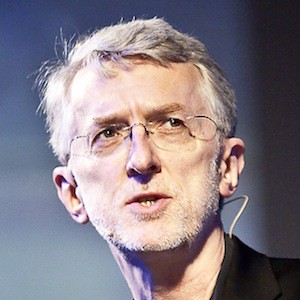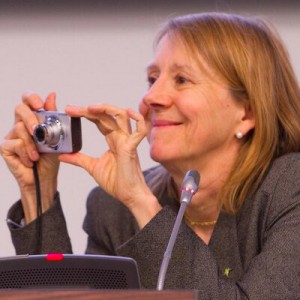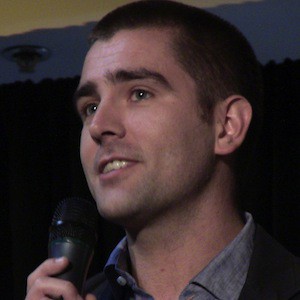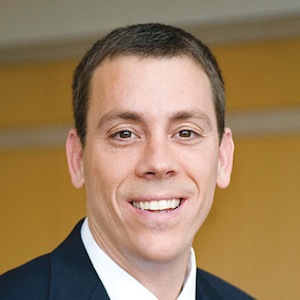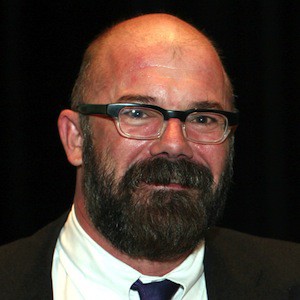John: Let’s start off by talking a bit about your career path — how you
got into journalism, how you began, what you’re doing now, what you
did. Tell me your career.
Denise: All journalism?
OK. Well, that’s a funny story anyhow. I was the switchboard
operator at the San Luis Obispo County Telegram Tribune. I had
dropped out of college and I was working at the newspaper at the
switchboard.
The woman who was the Sunday editor for the Sunday
magazine walked in one day with this load of books up to her chin.
I said, “What are you doing with that stuff?” She said, “I have to
review these books.” I said, “Oh well, I was an English major. I’ll
review one.” That was it.
John: Where did you go from there, once you started?
Denise: I had to badger my way into the newsroom, for starters. I
left when we tried to start a union and they tried to fire me. I
thought, “You know what? I don’t need this anymore.”
I moved to the Bay Area and my friend who I had met up
there…I’d lived up there after I dropped out of college. She was
the new editor of the Osborne computer user magazine called The
Portable Companion. She said, “Why don’t you come work for me?”
I had been working temp at the phone company during
divestiture, which is actually kind of interesting, doing data
entry. I went to work at Osborne. About 15 minutes after I got
there, they filed for Chapter 11.
I called a trade magazine, InfoWorld, and Stewart Alsop
was the editor at the time. I said, “I just got laid-off from
Osborne. You want a story?”
They took a couple of stories from me on the Osborne thing.
I can’t believe you don’t know this story.
Apparently, John Markoff, Paul Freiberger and Michael Swaine
all had walked off the job at InfoWorld because they really hated
Stewart. I was the next hire and I got John Markoff’s desk..
The beginning of a long and wonderful relationship. I worked
in the trade press for a while, and then I got a column in the San
Francisco Examiner. A Sunday business column called “Inside
Silicon Valley.” I did that for, oh, it seems like forever.
Probably about five years.
I started while I was doing that column I got to go down to
Cupertino and…no, it wasn’t in Cupertino. It was in San
Francisco. They had this top-secret lab, the Multimedia Lab. It was
in this old mechanics garage that they’d converted.
John: Who had the multi-secret lab?
Denise: This was the Apple site.
John: Apple. OK.
Denise: Who else?
Denise: I saw this thing and my mind was completely blown. They were
doing just this unbelievable stuff, stuff you could never possibly
have imagined. Interactive multimedia, as we used to call it, for
education. There was this great language learning program.
Unbelievable. There was a way for kids to make these interactive
reports about things. Of course, there was nowhere near the amount
of material there is nowadays. It was amazing.
John: This was in 1990 or when was…?
Denise: Oh, God no. It was before that.
John: Before that?
Denise: I think it would’ve been ’80…
John: ’88? ’80?
Denise: Well, maybe you’re right, around ’89.
I started writing about this stuff and it didn’t take me
very long before I just thought, “You know, this is really good.”
That was the game changer for me, was seeing that. I wrote about it
in the “Examiner,” and then I decided that…I had been
ghostwriting Stewart Alsop’s Prodigy column.
I had been working in his office down at PC Letter. I
said, “you know, I should just start a newsletter.” So I started
Media Letter which it was not quite the first one but it was the
first one that really caught on. John Doerr wrote me…he was the
first subscriber. He wrote me a check on the spot. He’s not so fond
of me now.
I did that for a few months, and then Jonathan Seybold came
to me and asked me if I would start a newsletter for him to go
along with their Digital World conference. I think that, by then,
it was ’91, ’92 maybe. I did that for a few years. I went to this
place called Friday Holdings.
John: Sounds familiar.
Denise: That’s sort of the
trajectory. I mean, it was kind of crazy. I just took to it. It was
one of those funny things. I remember somewhere in there the
American Film Institute asked me to come run a workshop for them on
Women in Multimedia. It was a job thing, how do you do this?
The only thing I could think of to do was I just invited all
the really great women I knew who were working in it. There was 12
or 15 of them all lined up on the stage. They also said exactly the
same thing which is also my story. It was the perfect time to want
to get into something if you were a woman, because nobody knew what
it was. The guys just thought, “Yeah, go ahead.” They kicked butt.
I had all these women tell their stories, basically, of
starting out in something completely different. They were the
secretaries or whatever. They all just dove into this and they made
it happen. The women made it happen, really. As soon as it got
good, the guys took over.
John: OK. Friday
Holdings then, when Friday Holdings as we both know folded, you
went…what’s the rest of your track, before I go and dig into it?
Denise: After Friday Holdings, I was invited to write a column for
the “New York Times” by someone.
John: Who will remain nameless.
Denise: Yep.
John: You did that until when?
Denise: 2000.
Denise: 1995 until 2000.
John: Then, “Hybrid Vigor” was…
Denise: Then, I started Hybrid Vigor in 2000 and…
John: Explain what Hybrid Vigor was, for those…
Denise: Hybrid Vigor was — still is, I’m just paying the money to
get the tax return I’m paying the money now to get the tax return
done, it’s a research institute.
A nonprofit research institute that was designed to study
interdisciplinary research and to apply it. To improve the methods
which people were…I mean, people were talking about
interdisciplinary research but they weren’t talking about how do
you do it. What is it? How do you do it kind of stuff.
Denise: New room, yes. Sorry. That’s a real snafu.
John: That’s OK. You just said that the visit to the Apple lab was
what I’m calling one of those Eureka moments for you. Were there
others?
Denise: Yes, in not such a positive way though.
John: OK. What?
Denise: In probably 1987, ’88, I was writing my Examiner column,
and a guy named Bob Jacobson, who was working for Gwen Moore, in
the State Senate in Sacramento, California…
…was trying to pass a bill, the first computer security
privacy bill. I didn’t know anything about any of that stuff. That
was the beginning of, for me, of realized that this could get ugly.
Probably if you had to tote up all the individual articles I’ve
written on various topics over the last gazillion years, that would
be security and privacy and copyright would probably be the top
ones.
Beating them, beating them, beating them. It was one of
those things, when I very first started, nobody knew what personal
computers where. Nobody really had one. They didn’t really
understand the ramifications of it. How I understood the
ramifications of it, I have absolutely no idea but I knew it was
like, “Uh-oh.”
It was one of the hardest things for me, I think, over the
years of writing about this is that nobody listened until it was
too late. Then, they’re still not listening. Dave Farber, he was
one of the original internet gods. We were around the EFF or
together on the Electronic Frontier Foundation.
I sent him an email about a year ago saying, “It all
happened.” He said, “I know it sucks. It’s really bad.”
John: Yeah. You said…It’s interesting, how much did you expect
that all this digital stuff, not just the privacy, did you ever
expect it to hit journalism what you were doing at the time?
Denise: I wrote about it almost immediately. I, also, in one of the
many little things that I did, I had a forum on what was Quantum.
Then it changed to America Online, so I had a forum on there, and
they had a news page. I looked at this, and I thought, “Oh my,
god.”
It’s different. Obviously, much different today. The technology’s
much different and you can brand things. Then it was this screen,
and there was a headline, no identifying characteristics. Was it
Reuters? Was it some podunk who decided to post something in the
news section? There was no way to know.
I thought, “We are in huge trouble.” I started stomping
around at all the journalism conferences saying, “You have got to
pay attention to this” and nobody wanted to listen.
In fact, at one conference, I shouldn’t name who it is. He
would be so embarrassed. Someone, a very august person, at a very
well-known publication, stood up and put his fingers in his ears
and said, “La, la, la, I can’t hear you. I don’t want to hear this.
I don’t want to hear it.”
It’s like, “OK. Well, that’s good. That’s helpful.”
.
The credibility issue has always been big for me, and that
was a lot of what I talked about. At some point, I was on a panel
at Cal, some journalism panel at Cal-Berkeley. I heard tell that
somebody from Pew was going to start a center, a thing, about this
credibility thing.
I said, “Hi. Actually, that was my idea, so maybe you would
like me to help.” I did this thing with Matthew Hawn, who
I’d worked with at MSNBC, at the site. We did this thing called
credible.org. We wrote standards and practices for publishing
online whether you were journalist or not.
It was pretty clear to me that that horse had left the barn.
If we really wanted people to be responsible about what they
posted then there were things that they could do to make sure that
people understood,that they were transparent, basically. It was a
case for transparency.
John: Transparency. OK. But as a columnist, one of those
transitions we’ve seen over the years, which goes ahead with the
point you were wrestling with just now is the question of…When we
all started working in journalism…Journalism always had starts,
but the institutions were always bigger than the stars. Now the
stars… And you were a columnist. You’re a star. Now the stars
almost transition into brands that are separate from the
institutions.
Does that surprise you? Is that also in the arc that you
knew was coming?
Denise: Yeah. We didn’t call it that. But it was pretty clear, when
the commercial Internet started to ramp up, that there was going to
be so much stuff. And there already was, stuff got online so fast.
You were going to need someone to guide you through it. At the time
it was not journalism stars, but it was celebrity stars. Like David
Letterman, whatever, the stuff that he thinks is funny. People
really do do that.
In a way, that’s what Twitter has become. But it was clear,
there was going to have to be something that helped people make a
cut through…I always felt really sad about that. Because like or
hate broadcast TV what you lose by having these really narrow
channels is all the serendipity. At the time I was writing for
Digital Media and I made some snarky comment like, “If you’re a Neo
-Nazi, you’ll just look for the Neo-Nazi news.”
You’re not going to hear anything that’s ever going to
challenge your worldview. I think that has really happened.
And in a really bad way. So I don’t know.
John: Things happen. Let’s talk about, things change. You
mentioned the forum you held at the American Film Institute, with
the women who were in it early on. What have you noticed that’s
changed in that technology coverage? Not coverage. The technology
sector. You were back there, in the early days. How has it changed?
Money for sure. But what other ways has the culture changed?
Denise: Empty money, really. It started at the last big dot-com
boom. I remember talking to Ann Winblad. She said, “I’m afraid to
do anything. All these wannabe…If I make a bad decision they’re
going to chase me right down the rat hole.” And they did. The thing
that I’ve seen primarily…It had already happened by the time I
left The Times, which was one of the reasons I left the Times.
There was no substance anymore. It was huge amounts of money
that these big companies like AOL would pay for these little, teeny
applications like a calendar thing or something. And it just was dumb.
It was shallow. It was lowest common denominator in the worst
possible way. It wasn’t interesting anymore. There wasn’t anything
interesting about it. The people who were doing interesting things
could not get any traction.
There are a few people who have continued to be inventors.
Steve Perlman is one of them. They keep inventing technologies. But
it’s not about the technology anymore. The technology piece of it
has gone. I think Steve Jobs is looking up or down, or whatever…
…from wherever he is, and laughing his ass off. Because
he ruined everything. People are face-first in their screens all
the time playing Angry Birds. We have just become so ridiculous.
It’s ridiculous.
Denise: I walk my dog in the park pretty much every day, and it’s
really beautiful here right now. It’s fall, the leaves are down.
There are people walking through the park with headphones on. Why
would you do that? There’s birds.
John: It’s changed. Look, tech will change the world was always
seen as sort of an empty boast and then it happened.
Denise: I never thought it was an empty boast.
No, but I knew there’s always two sides to everything. I
gave a talk one time called “10 Reasons Why I’m Always So Cranky.”
That’s one of my favorite talks, actually. It was partly because
there’s always a way to exploit in the negative sense. I remember a
column. They say the long-term memory is the last to go.
I remember a column at the San Francisco Examiner that it
was like the annual federal productivity report or something and it
was down. All of these computers that were supposed to increase
everybody’s productivity not only did they not do that, but they
made it worse.
That’s something that I think people didn’t see coming.
They didn’t see that computers were going to actually replace them.
John: Right. That’s perfect.
Denise: I don’t know that I saw it coming way before it happened,
but I remember writing and saying the same kind of stuff that
people are saying today. How do you expect people to buy your stuff
if you pay them no money or you lay them off because you have a
machine that can do it instead?
I feel like such an old fogey saying that, but the fact of
the matter is it’s true. You can be the frog in the water if you
want. I think that people who started in this when it was the ’90s
or something, they don’t see it. They don’t see what’s happened so
they all think we’re going to do a start-up and we’re going to be
gazillionaires. Maybe, maybe not.
Then look at the detritus that they left after the Dot Com
boom at the end of the ’90s. San Francisco is ruined. It’s ruined.
Too expensive. Filled with hipsters that actually think they’re
worth that much money.
John: What was the relationship…you’ve seen covering technology
go from a handful of people at one point. I can remember when the
Times had one person in San Francisco covering technology.
Denise: Me, too.
John: To now where everybody’s covering technology.
Denise: I wouldn’t say that they’re covering technology.
This is the blenderizing of it that really makes it hard for people
like me to even want to read a newspaper anymore. Because I
actually had to learn the technology when I was writing about it. I
had to be sure that I wasn’t getting the wool pulled over my eyes
by somebody because I was a journalist who didn’t have any
technical background.
I really learned to ask more questions, to check around, to
make sure that it was right. I don’t see much more than press
release rewriting in most places. Even in really well-known places
a lot of the coverage is still in the business section and it’s
very much inside the tent.
John: You’re not seeing at all, in your estimation as a reader
now, a lift in the quality of the coverage over the years?
Denise: No. There are a few people who stand out. Matt Richtel is
just amazing. I just read his book. I was awe-struck.
That’s the kind of stuff, not these little one-off pieces
where somebody decides that they talked to two or three industry
people and maybe somebody at a consulting firm and then they think
they have a story and they have nothing, really.
John: How about the idea that everybody says, “Everyone’s a
journalist.” There’s thousands of journalists. Do you put any stock in
that?
Denise: Everyone’s a publisher.
I think the only way you could make the statement that
everyone’s a journalist is if you really followed the credibility
guidelines. That was the thing I was really trying to pitch back in
the ’80s. I said, “We need a milk advisory board for journalism. We
really need somebody to go out and start stomping and saying, ‘This
is what a journalist does. We check our sources,” blah, blah, blah.
I don’t know why – arrogance, denial, for whatever reason.
Maybe it was becoming clear the quality was going to go down and you
couldn’t really say those things about yourself anymore because you
didn’t double check your sources, but it never happened.
There was a golden moment when it could have happened. I
think the news business, in particular, could really have turned it
around.
John: What was that moment, do you think? You mean the news
business could have turned itself around, turned the quality of
online around? What do you mean by that?
Denise: Prodigy had a news service and America Online had a news
service. CompuServe had a news service. All of these places that
were sort of online database-y things had news, for the first time,
somewhere
else. Some of them got their stuff from the wires, and you might
see a wire tag at the end or something, but there were no rules.
No one was branding. The web hadn’t been invented yet. It
wasn’t like you had links or anything. You just had these blocks of
text that called themselves news. So the moment was early on.
John: And the moment was short. You’re saying about a two-year
window.
Denise: Yeah. All this stuff ramped up real fast. Especially
anything that was text because that was easy and certainly much
cheaper than trying to do anything with images.
John: Were you surprised that the new business didn’t reach the
level of innovation that seemed to be necessary to survive?
Denise: No.
John: Why? Is there something in the news business that makes it
unable to…
Denise: The news business was just as old and entrenched as any of
the other old industries. I wasn’t surprised. The whole computer
thing was still even new in the newspaper business when all this
stuff started. I wish I could still find the photo when I was
working in St. Louis. We had just gotten Atexes. I didn’t know
there was a photographer there. I was slumped in front of
the…Like, “Oh my God.”
I was in my early 20s then. The people who had to learn how
to use that, who were older than that…it was like an alien
planet. I remember, for a long time, well into the ’80s, computers
weren’t really entrenched yet. Because the big guys didn’t know how
to type. It’s really prosaic stuff like that that you don’t realize
has such a big impact. But that was a big thing.
People who didn’t type didn’t use computers. Period.
John: What was it like among the journalists covering tech in the
’80s and ’90s. Was it more competition or more camaraderie?
Denise: Both.
It was kind of old school. It was the way people who
were on the same beat always covered things. You know each other,
maybe you hate each other for personality reasons. But nobody
really…It wasn’t like, “Oh, Evelyn is covering this.”
I was never a reporter at a newspaper at that time. I
didn’t have to worry about that kind of competition. People weren’t
like that. They didn’t share stories or anything, but they hung out
together. I just have the vision of all the legal reporters hanging
out in the courtroom, jawboning. People who cover the White House,
stuff like that.
We really were a breed apart. In the ’80s, if you were at a
party and you told people that you wrote about technology for a
living, it was like you dropped a stink bomb in the room. They
cleared out.
Nobody knew what you were talking about. They didn’t want
to know what you were talking about. Like, “Oh, look at the time!”
So we talked to each other. I think it’s the same thing as any
reporters who had a specialty or a beat that they really knew a lot
about, that was intricate.
Like the law, stuff like that. But that’s so diffuse now.
John: It’s interesting. By the ’90s though, that had changed. You
were no longer a stink bomb in the room. The companies always
wanted access to you in the ’80s and ’90s. Right or wrong?
Denise: They wanted access to me because I wrote for the trade
press and I wrote a newsletter. When I started writing for The
Times, nobody would return my call.
John: Really? Why? What’s your analysis.
Denise: One person, who shall remain nameless, said, “Why should I
talk to you, you’re just going to tank my stock price.” Like,
“Really?” It was probably true, but still.
John: If I bring up the Justice League of America, does that ring
any bell with you?
Denise: The comics?
John: No, if it’s just the comic than never mind. Because Markoff
tells a story and he couldn’t remember quite when and where, about
being together with a bunch of reporters, and them all deciding to
set up their own independent shop. It lasted for about 24 hours.
There was even an episode where the venture capitalists
wrote them a $10 million check. They all flipped out so it never
happened. Do you…
Denise: No, I think that was…That was probably after I left The
Times. I can’t even imagine the number of incredible job offers
that John Markoff has gotten over the years.
Denise: Intriguing for a minute, but then…No.
John: What do you think about journalism these days? Are you
optimistic about it? Are you not? You’re not practicing it in the
new role.
Denise: I practice it more than most journalists do, right now,
even though I’m not publishing. But the way I do research, the way
I write about things. I take nothing for granted. I learned at the
feet of the master. Jim Hayes was incredible. He was my mentor who
was a teacher at CalPoly. He was also one of the editors at the TT.
(Telegram-Tribune) He was no-nonsense about all of this stuff.
John: It’s the same thing that Esther said. Esther said she
started life as a fact-checker. That’s sustaining, that mindset.
Denise: You come to realize that if you don’t ask those questions,
in a world that’s as complex as this one, if you don’t push the
question, you almost certainly are going to get it wrong.
John: It’s true. Why do you think nobody listened to you? It’s
true of all the journalists. I was talking to one of the colleagues
the other day. He said, “I had a great relationship with my boss,
but he never asked me. Who’s going to listen to a tech journalist?”
Did you find that so?
Denise: I didn’t find that to be true at the Times. Arthur did more
outreach than anybody else. When I wrote for The Examiner, Will
Hearst was the editor. He was invested in a ton of technology
companies. So he knew what we were talking about, but we couldn’t
talk to him very much. Conflicts of interest all over the place.
In terms of anybody else listening, I feel like it’s…I
don’t know how to describe it exactly. You know when you have
people do surveys and they say, “How would you feel about having
your own personal spaceship?” I would love that. But when push
comes to shove, nobody is going to have their personal…
What I’m trying to say is that it’s very difficult to
imagine something that doesn’t exist. Some of us who covered the
industry from the beginning, we saw the underpinnings. We saw the
chips and the video cards. We saw all of this stuff developing. We
could extrapolate.
Whereas people who didn’t have that technical
understanding, it just sounded like you were flapping your lips to
them. It was like, “That’s crazy. That’s never going to happen.”
La, la, la. I couldn’t believe it. He actually stood up, put his
fingers in his ears and said, “La, la, la. I can’t hear you.”
John: You sure you don’t want to say who that was?
Denise: I don’t want to embarrass him. It was ridiculous. It was
just ridiculous.
John: One other thing I want to chat about. You had the forum,
you had others. That transition in a journalists’ relationship with
the audience is huge. Once upon a time, when we all began, you used
to get a snail mail would come in once in a while. Now it’s…Is
that good? Is that bad? What do you think about that, that
relationship with the audience that journalists have now?
Denise: If I started a blog again, I would not post comments.
John: OK. Why?
Denise: Because unless you vet people the vast majority of people
are going to be like, “Haha, she said ‘fart.'” The level of thought
and consideration for other people… It’s gone. I just don’t
respect that. There are things for which I’m sure it’s great. But I
don’t think it’s useful in journalism, unless you can vet the
people. And then it’s not free speech. So I get why people don’t do
that. But I don’t want to have those conversations.
I don’t want to have a conversation with someone who is too
ignorant to read to the bottom of the story. I don’t want to have a
conversation with somebody about the public policies of genetically
modified organisms who hasn’t read the book. I wrote a book about
it. I did four years worth of research. Did you do four years worth
of research? “No.” Well then, shut up. It’s very frustrating to me.
It’s very frustrating.
Part of what’s happened I think, also, at least in the
United States, is that people are really polarized, about commerce
in particular. So if there’s anything that looks like you might be
able to make money doing it, it’s good.
Doesn’t matter what it is really and if somebody wants to
take issue with that or say that maybe there are other aspects,
which is what I’ve made my whole career doing. They’re like,
“You’re a Luddite, shut-up, you’re stupid. Your mamma wears Army
boots.” It’s not fruitful.
John: No. But you were one of those who always saw how
things…Because of you inquiries you saw the underpinnings. You
looked closer rather than at the top. That unfolding inquiry that
you use is unique. That’s not how most people go about their lives
at all.
Denise: I know. I understand that and I wouldn’t expect most people
to do it. But what I would like is some respect for doing it. I
think people who do those kinds of unfolding inquiries, they could
be the people who help keep all of this together by making sense of
it. You can’t continue to bifurcate arguments until the end of
time.
You can’t get anything done that way. What you get done has
to be undone later. Because some ideologue decided not to fund the
NSF (National Science Foundation)anymore or something.
John: Yeah. All right. Not optimistic about journalism.
Denise: But what I am optimistic about is that if you know how to
look for it, the people who are doing really good work are there.
They’re out there. However they’re getting it out there, they’re
doing it. They don’t get the same kind of buzz that Perez Hilton
gets. There’s really good stuff out there. It’s harder to find a
really good general journalism.
But the people who do specific stuff…whether you call it
journalism or whatever you call it. There are lots of places where
you can find excellent information that’s vetted properly.
John: So as someone said to me, “I’m optimistic about journalism
with a small ‘j.'”
Denise: Exactly right. Because I think people…Once they start
looking at what’s around, writers who care about what’s going on in
the world have this deep, innate sense of, “Oh, that’s not right.”
So if they decide to jump in then they want to do it right. I
really am grateful for that.
John: As am I. Alright, thank you very much.
Denise: You are welcome.
